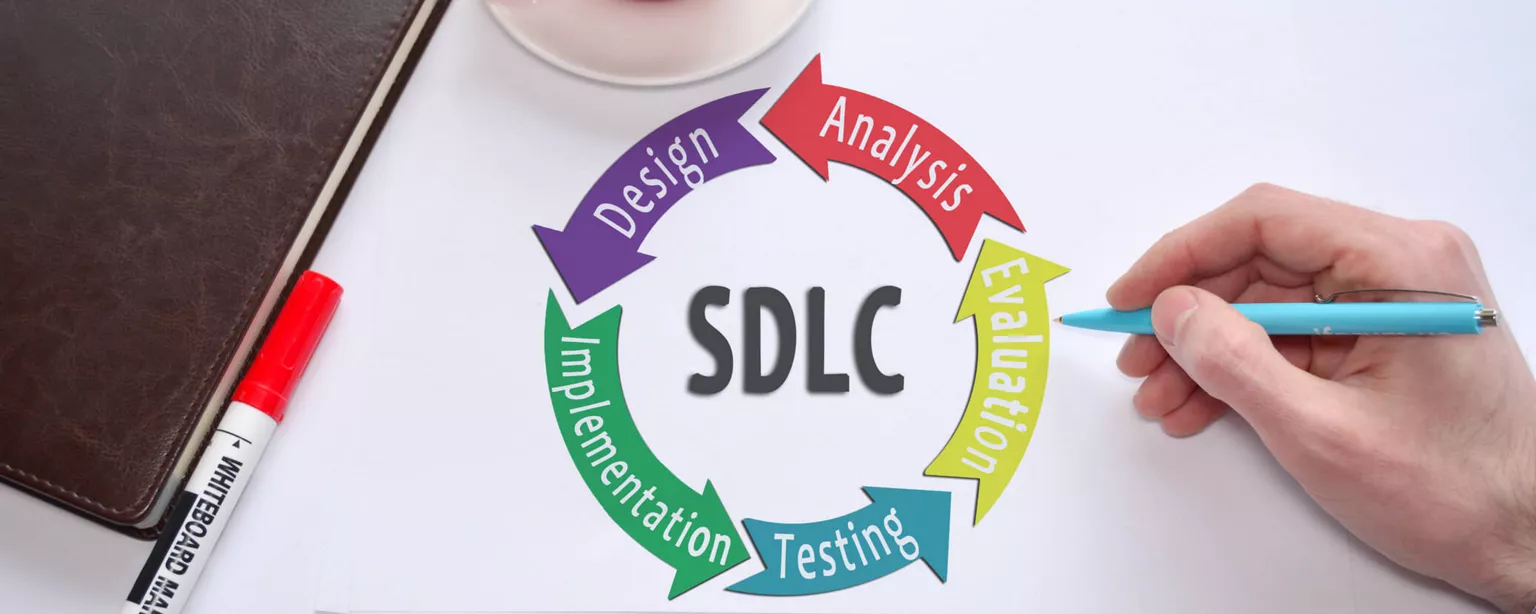The Software Development Life Cycle (SDLC) is like a recipe for creating successful software. It breaks down the process into manageable steps, preventing you from skipping critical ingredients or adding them in the wrong order. The SDLC helps you create a great final product — software that works as intended.
The SDLC process involves several distinct stages, including planning, analysis, design, building, testing, deployment, and maintenance. But which SDLC methodology is right for you and your business? Let’s explore six popular models.
1. Agile
The Agile model, a significant milestone in software development, emerged in 2001 and has since become the de facto industry standard. Its principles and applications are so valued by some businesses that they extend its use to other types of projects, including nontech initiatives.
The Agile model values quick iterations and views “fast failure” as an opportunity for learning. Teams release small, incremental updates frequently, test each new version, and gather feedback from stakeholders throughout the process. This allows developers to catch small issues early on, preventing them from becoming major roadblocks later.
Many teams use frameworks like Scrum and Kanban to organize complex projects within the Agile philosophy. Scrum divides work into sprints (usually two to four weeks), using daily check-ins to track progress. The Scrum Master keeps the team on target.
Kanban, inspired by Japanese manufacturing methods, emphasizes the visual management of work. A Kanban board displays tasks as cards that move across columns, showing the development stages. This real-time visualization pinpoints bottlenecks and optimizes workflow. Unlike Scrum’s fixed sprints, Kanban focuses on continuous delivery — teams pull new tasks as capacity allows, leading to a smoother, more consistent work pace.
2. Lean
Inspired by the efficiency of “lean” manufacturing, the Lean model streamlines software development through seven core principles: eliminate waste, amplify learning, decide as late as possible, deliver as fast as possible, empower the team, build in integrity, and see the whole system.
Lean teams work on what’s essential at the moment, eliminating multitasking and constantly seeking to reduce waste. This means minimizing unnecessary meetings and streamlining documentation throughout the software development lifecycle (SDLC).
While Agile is itself a Lean method for the SDLC, it differs in how it approaches customer satisfaction. Agile prioritizes customer feedback from the start, valuing their input and allowing teams to adapt swiftly throughout the project. Lean, on the other hand, focuses on eliminating wasteful practices with the aim of creating greater overall value for customers, naturally enhancing satisfaction as a result.
3. Waterfall
Some experts argue that the Waterfall model was never meant to be a process model for real projects. Regardless, Waterfall is widely considered the oldest of the structured SDLC methodologies. It’s also a very straightforward approach: finish one phase, then move on to the next. No going back. Each stage relies on information from the previous stage and has its own project plan.
Waterfall’s appeal lies in its simplicity, but this rigidity is also its downfall. Early delays cascade through the entire project timeline. Plus, its lack of flexibility means problems identified in one stage can’t be addressed until much later. This makes it poorly suited to projects requiring adaptability or long-term, ongoing development.
Get information about how to put together a winning tech team in Building Future-Forward Tech Teams, an e-book from Robert Half.
4. Iterative
The Iterative model embraces repetition. Instead of starting with fully known requirements, project teams implement a set of software requirements, then test, evaluate and pinpoint further requirements. A new version of the software is produced with each phase or iteration. Rinse and repeat until the complete system is ready.
The Iterative model’s advantages lie in its early working prototypes and flexibility. Change is easier to manage compared to more rigid models. However, the constant repetition can quickly eat up resources.
One well-known Iterative framework is the Rational Unified Process (RUP), developed by IBM. RUP aims to boost team productivity across various project types. It organizes development into four phases:
- Inception: The project idea is born.
- Elaboration: The project is fleshed out, and resources are assessed.
- Construction: The software is built.
- Transition: The final product is released.
RUP involves ongoing business modeling, analysis, design, implementation, testing and deployment within each phase.
5. Spiral
One of the most flexible SDLC methodologies, Spiral takes a cue from the Iterative model and its repetition. The project passes through four phases (planning, risk analysis, engineering and evaluation) over and over in a figurative spiral until completed, allowing for multiple rounds of refinement.
The Spiral model is typically used for large projects. It enables development teams to build a highly customized product and incorporate user feedback early on. Another benefit of this SDLC model is risk management. Each iteration starts by looking ahead to potential risks and figuring out how to best avoid or mitigate them.
6. DevOps
DevOps is a more recent addition to the world of SDLC methodologies, born from a few key trends. It draws on Agile and Lean ideas for operations and emphasizes a radical shift in valuing cross-team collaboration throughout development.
Instead of separate silos, DevOps unites Developers and Operations into a close-knit team (sometimes even merging them). This leads to faster innovation, smaller but more frequent updates, and higher-quality software. Key traits of DevOps include discipline, constant feedback, streamlining through automation and a constant drive for improvement.
Choosing the right SDLC methodology is vital. However, remember that even the best model is just a framework. True success depends on a skilled and dedicated team ready to navigate the inevitable challenges of any complex software project.
What to look for when hiring a software developer
Each of these SDLC methodologies boils down to one thing: teamwork. The right model helps coordinate your team as they deliver each project. It also helps sync their efforts with other teams, such as quality assurance and UX design. Most importantly, it helps projects stay focused on the end users’ needs.
If you’re bringing in a new software developer or tech pro, it’s good to look for someone with experience in your preferred SDLC model. You also need to look for a candidate with soft skills like:
- Communication — Developers must communicate with teammates and managers all the time. They need strong written and oral communication skills.
- Collaboration — The lone genius stereotype doesn’t work on a large software project. Each team member must be able to synchronize their efforts with that of their colleagues.
- Flexibility — Software development methodologies like Agile and DevOps are all about adapting and being flexible. Your new developer must be able to roll with any sudden changes in the project’s direction while also staying focused on the ultimate goal.
- Attention to detail — Developer errors can increase the duration of the software development life cycle. Even worse, an error or oversight could result in an unstable final product.
- Security consciousness — Given the rise in cybercrime, most software teams now take a security-first approach to software development. Everyone on the team must think about security and data privacy when making even the most seemingly minor changes.
Not all developers might have experience with your SDLC. For instance, some professionals with an Agile background might not have worked in DevOps. But if they have the right mix of technical skills and soft skills, and if you offer adequate support, they could thrive in a new environment.
Interview technology candidates right away
If you’re hiring for your technology team, Robert Half can help make the process easier. Explore the various hiring solutions we offer and contact us when you’re ready to take the next step.








